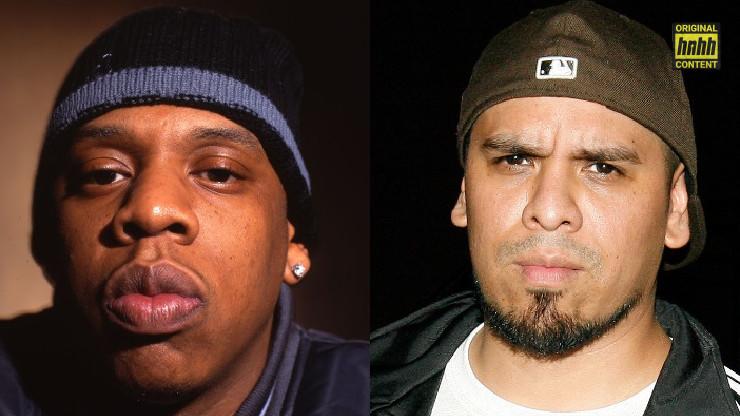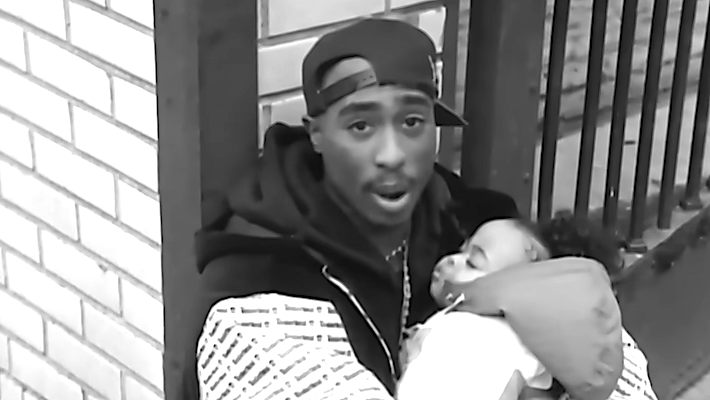Immortal Technique and Jay-Z both delivered two of hip-hop’s most memorable twists in “Dance With The Devil” and “Meet The Parents” respectively.
Imagine, if you will, that did indeed have to use his AK on “Today Was A Good Day.” Perhaps in another universe, he might have succumbed to his violent urges and knocked the entire plan askew. It wouldn’t be the first time a rapper allowed his tale to take a dark turn. In fact, some seem to relish taking listeners on an emotional roller coaster, plummeting headlong into discomforting territory. It’s not entirely unexpected. Writers have long enjoyed disturbing those who engage with their work. Sometimes it’s through means of the supernatural. Other times, especially in hip-hop, it’s through examinations of the human condition. Those sorts of stories, especially when given enough room to breathe and develop, are often the ones that leave a lasting impression.
For many rappers, a story is only as effective as its climactic moments. Consider those famous films that have come to be remembered by their iconic twists. The Usual Suspects. The Sixth Sense. Oldboy. When the ghastly truth is revealed, not only is a viewer shocked by the revelation, but equally curious. More often than not, the second viewing is even more rewarding, as one can completely recontextualize the story — all while gaining a deeper understanding of the writer’s true vision. The same can be applied in hip-hop. While not every story features a twist ending, many that do are often thematically dark in nature. On this topic, it’s hard not to immediately think of one of the genre’s most notorious storytelling tracks, ’s “Dance With The Devil.”
There are many who would comfortably name “Dance With The Devil” as the darkest song ever written. A fair case, and one made all the more potent by way of a macabre — and undeniably powerful — twist ending. For those who have never heard the song, consider this a warning. It will be spoiled. Off the bat, it’s clear that something ominous is afoot. 44 Caliber haunting piano-driven instrumental is equivalent to black clouds floating. As Immortal Technique begins recounting his cautionary tale, the focal character of Billy Jacobs is introduced. A simple young man, though Technique spends the majority of the tracks’ early moments in bringing him to life. His mother was a fiend, his father absent. A desire for money, power, and respect. “The product of a ghetto-bred capitalistic mental,” as Technique eloquently puts it. It’s important to note that he takes his time in letting the story unfold, with the song clocking in at nearly seven minutes. Despite the constant barrage of detail, it remains a slow-burner and thus all the more effective at building tension.

Brian Feinzimer/Getty Images
The twist is well known. In an attempt to validate himself to his fellow gangbangers, Billy Jacobs engages in the violent gang-rape of a woman, her face covered by her shirt. After participating in the act, Billy pulls back the shirt to discover the brutalized face of his own mother. The gut-punch is brilliantly conveyed by Technique, who summarizes the fallout in four powerful bars. “Cryin’ out to the sky, cause he was lonely and scared, but only the Devil responded, ’cause God wasn’t there,” he raps. “And right then he knew what it was to be empty and cold, and so he jumped off the roof and died with no soul.” A devastating ending made all the more effective through the twist — after all, it’s what has haunted over forty-four million listeners for years now. Though the song would likely hold a similar impact with the twist removed, its inclusion clearly elevated “Dance With The Devil” to new levels of notoriety. Rappers have long battled the devil on wax, from ’s “Damien” to ’s “My Darling,” yet Immortal Technique’s chilling rendition used the device of a twist ending to strengthen the potency of his message. Brushing the horror off as the plight of the faceless instead turned to something far more personal, far closer to home.
Themes of family have often been at the center of many works of dark fiction. For Jay-Z, the topic made for one of the most compelling songs of his career, Blueprint 2 highlight “Meet The Parents.” Though deriving its name from a Ben Stiller and Robert De Niro comedic romp, Jay-Z’s tale is anything but. Over a foreboding instrumental from , evocative in its blend of piano and guitar, Jay wastes little time in developing his atmosphere. “Let’s take a trip down memory lane at the cemetery, rain, grey skies, seems at the end of every young black life is this line, damn, him already?” he recites, positioning himself as an omniscient narrator. Like Immortal Technique, Jay-Z takes his time in setting the stage, though his chosen tale features two focal perspectives — that of Isis, the mother, and Mike, the father. At a respectable five-minute runtime, Jay gives himself plenty of room to develop his characters. And in a dexterous turn, he allows himself to leap in and out of linear chronology as he sees fit.

Jon Super/Redferns/Getty Images
In another moment of strong authorial control, Jay shifts focalization to Mike at the halfway point, having already established his character as seen through Isis’ point of view. It doesn’t take long before the foreshadowing begins, and first-time listeners may be so compelled by Jay’s detailed writing that it goes entirely unnoticed. When a third character enters the narrative, a young gangbanger that draws Mike’s attention and ire, a conflict immediately brews. Guns are drawn as the younger man comes to a devastating realization. “There was something in this man’s face he knew he seen before,” raps Jay. “It’s like looking’ in the mirror, seeing himself more mature.” It doesn’t matter — Mike shoots him dead, the inadvertent murderer of his own son. A tragedy in itself, amplified by Jay’s choice to frame the bulk of the tale through Isis. By feeling her pain, we’re given a direct glimpse into the catastrophic fallout of such senseless violence.
There’s an easy parallel to make between this track and “Dance With The Devil.” Like Technique’s Billy, Mike is driven by a desire to thrive in a hostile environment regardless of the pain his actions might inflict. A key distinction between the two that should be noted is the knowledge each man had regarding the consequences of their actions. When Billy participated in the horrible act of violence against his mother, he came to the realization and was moved to act on it. The knowledge of what he had done was enough to drive him to insanity from which death was the only escape.
In Mike’s case, Jay-Z doesn’t allow us that sense of closure. Both Isis’ pain and Mike’s reaction to the murder are left unresolved, open to interpretation. We’re able to glean hints at how Isis might fare, with her relapse and subsequent –though perhaps doomed– search to find balance, romance, and tenuous resolution. In Mike’s case, Jay-Z neglects to follow him after the climactic death, though he does offer a subtle clue toward his ultimate fate. Though spoken in relation to the son, the same principles can apply to the father: “He put his faith in a thirty-eight in his waist, but when you live by the gun, you die by the same fate.” Like Billy, Mike will inevitably end up dead; though not by his own hand, by his own actions all the same.



